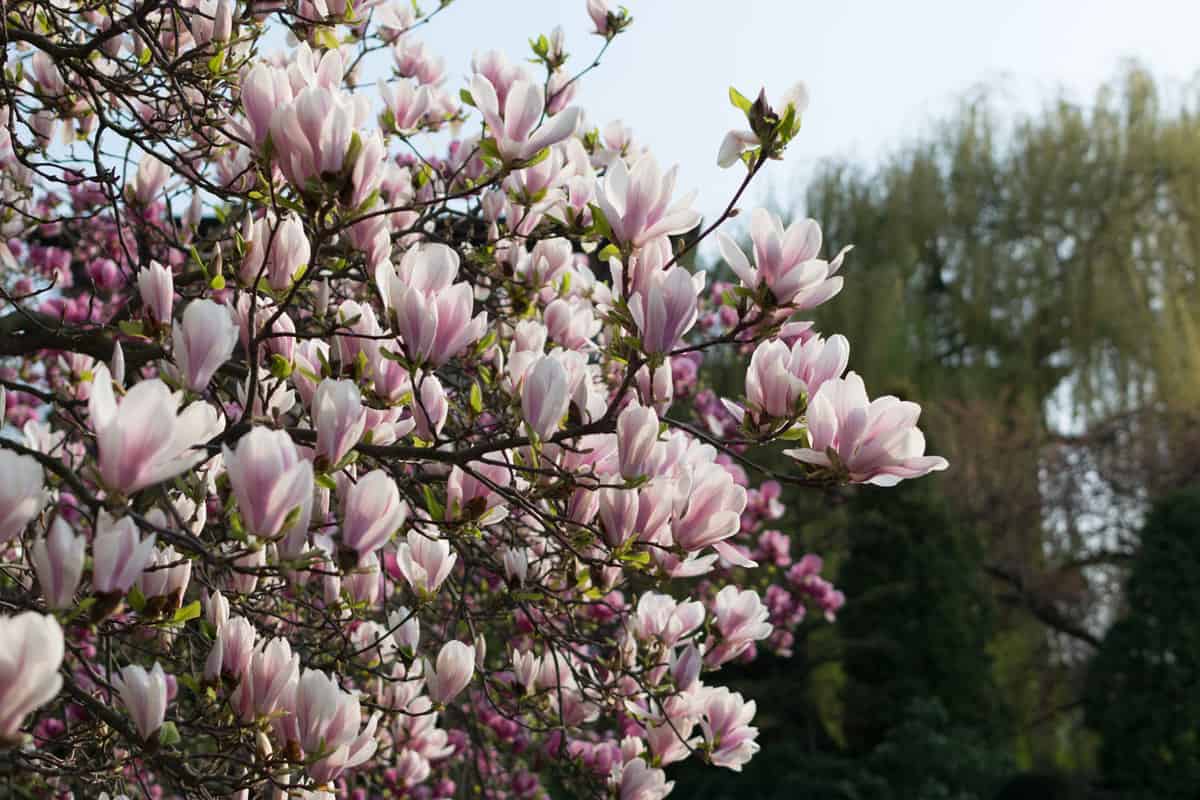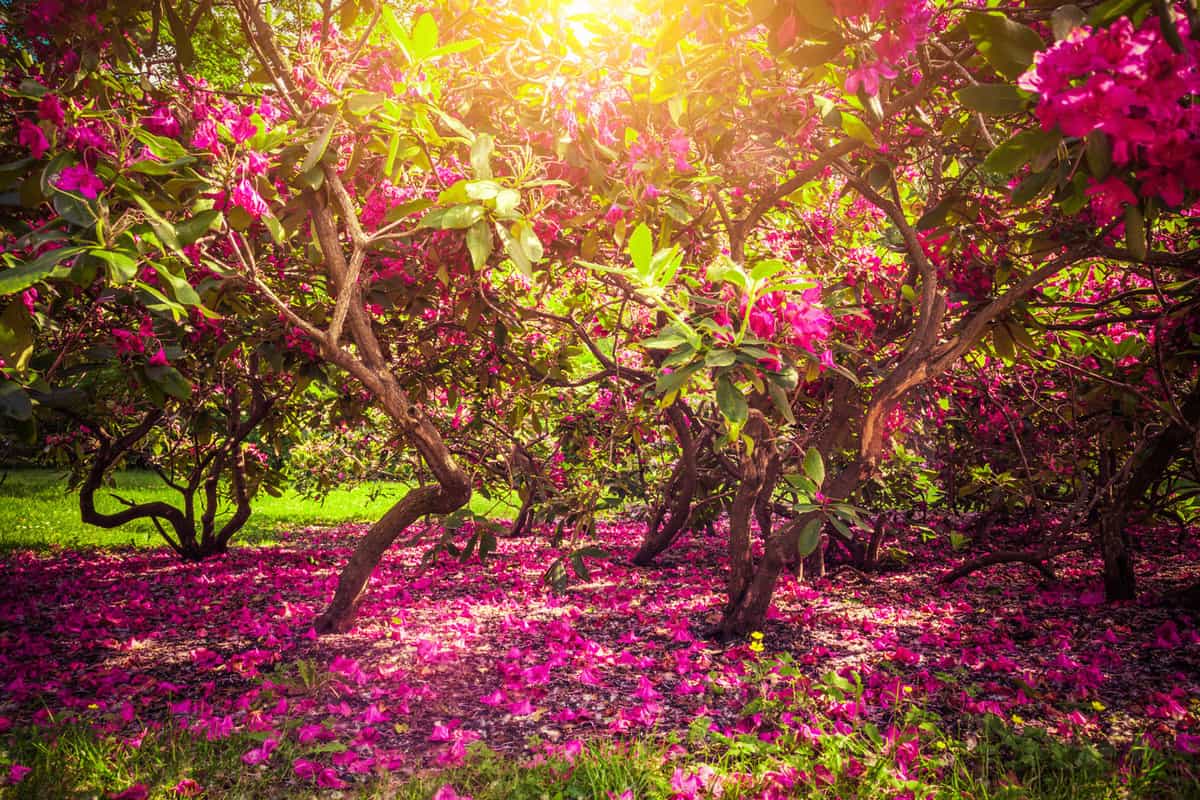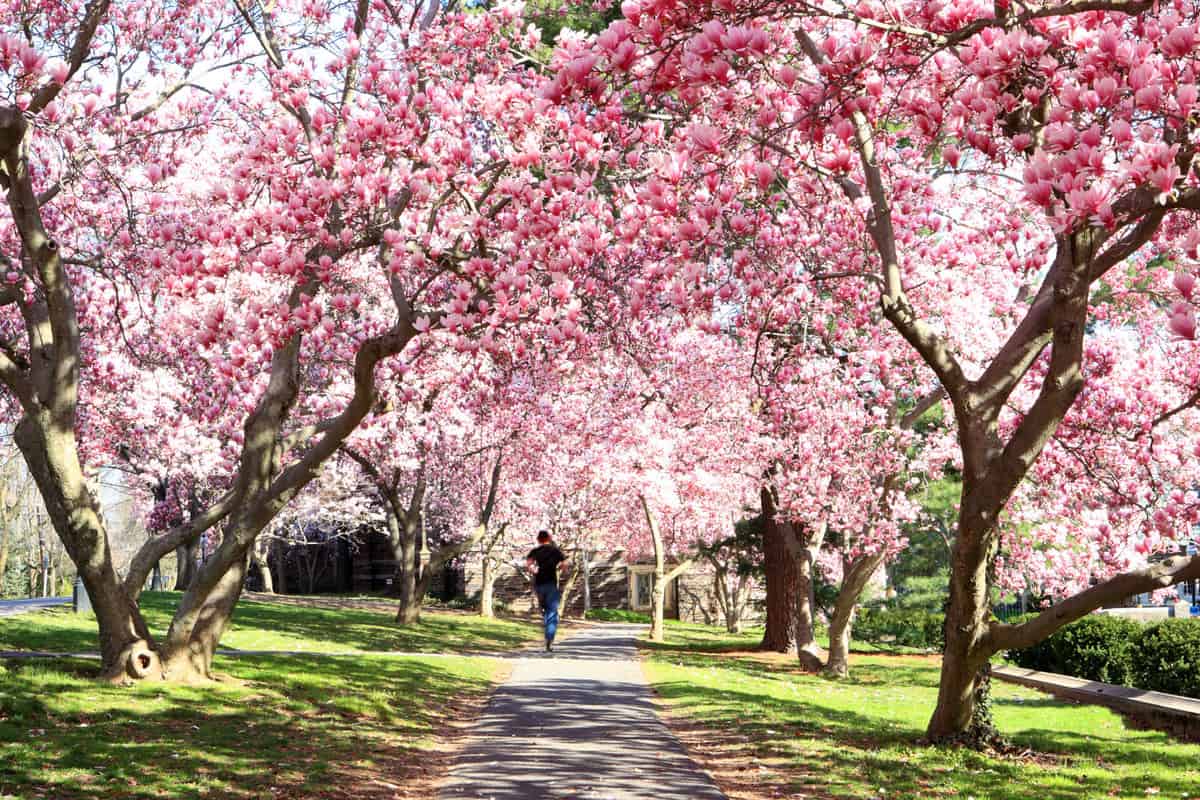Do you have a new magnolia tree that you're looking to plant in your yard? Are you wondering how often you will need to water the plant? And can you over water at a magnolia tree? These are great questions, and we've done some research to find the best answers to them. In this post, we will share them with you.
Yes, you can over-water your magnolia tree. Magnolias prefer soil that is moist. However, like many garden plants, their roots can drown if they are constantly kept in water. They can also develop fungal issues such as root rot, which can be detrimental to the tree's life.
A magnolia tree is one of the most beautiful trees that you can purchase. It's worth taking time to learn how to maintain it best, especially when it comes to watering. Below we will discuss the best watering techniques to use for your magnolia tree, as well as the symptoms that it may display if it is overwatered or under-watered. Continue reading to learn more about how to properly water your magnolia tree.

Phases Of Watering Your Magnolia Tree

Initial Planting
When first planting your magnolia tree, be sure that you plant it in light and loose soil and encourage growth during the fall or spring. This time of year typically has the most rain, which can help the tree establish a solid root system. During this time, it's okay to water the plant two or three times a week, helping the roots grow stronger and bigger. Keep in mind that the soil should be moist, not soaked. It's also a good idea to let the soil dry out slightly between watering sessions so that the roots don't become overburdened.
Root System Formation
Young magnolia trees need time to develop a strong root base, so watering is so important during this time--it's essential if the tree does not receive water from frequent rains. Be sure to water the tree deeply so that the roots can find their way down into the soil.
To do this, take a water hose and place it at the base of the tree, allowing it to run for about 10 to 15 minutes. This should give the soil a thorough soaking session, and you can skip watering it for the next two or three days after this. Keep in mind that if your magnolia tree receives light and frequent watering sessions, the roots will form a shallow network beneath the surface of the soil.
This can weaken the magnolia tree and possibly cause it to tip over from the lack of support and nutrients. Perform frequent deep watering sessions for the first 2-3 years of your young tree's life. It can take as long as four years for the routes to establish. If you live in an area with especially warm or dry conditions, you may want to water your tree 4-5 times a week.
See this water hose on Amazon.
Daily Maintenance
It's helpful to use the outside temperature as a watering guide to determine how often you should water your magnolia tree once it's established. For example, when outside temperatures average 70 degrees Fahrenheit or below, you may not need to water the tree that often.
Do a quick check of the magnolia tree's root ball to test it for dryness. If it is dry, water it as soon as possible. However, if the average temperature covers anywhere from 70 to 80 degrees Fahrenheit, you'll want to water your magnolia tree at least once a week.
Lastly, if the average outside temperature is 90 degrees or above, you will likely need to water their magnolia tree three times a week at a minimum to ensure that it is adequately hydrated. Be sure to water the tree for about 10 to 15 minutes. It's always a good idea to test the moisture level of the soil between your watering sessions. It's easy for magnolia trees to get stressed during the hotter months of the year, especially if you live in a warm environment such as the south or on the west coast.
See this watering can on Amazon.
Tree Preservation
To help your magnolia tree maintain its moisture levels once its roots are established, consider placing mulch around the tree's base. When laying the mulch around the tree, be sure to put it a few inches away from the tree's trunk to keep the moisture close to the ground and prevents it from evaporating too fast. This will help you reduce your watering sessions, as the tree will retain the water longer.
Also, make sure to pull up any grass or weeds that appear around the base of your young magnolia tree, as they will compete with the plant for water and other vital nutrients.
How Often Should You Water Magnolias?

The amount of watering that you're a magnolia tree requires depends on its stage in life. Young magnolia trees typically require more water, as their roots need to become established to support the tree and encourage its growth. Watering your magnolia tree regularly will help the tree to reach its full potential. It's usually recommended to water the tree at least two to three times a week.
However, you can do a soil test to determine if the tree is truly in need of a watering session. You can take a 6-inch stake and stick it into the soil around the base of your magnolia tree. The stake should go in relatively easily, and it should be moist when you touch it with your fingers. If you struggle to push the stake into crumbly soil, then it's definitely time to water your magnolia tree. If you notice pools of water sitting on top of the soil around your magnolia tree, allow it to drain down before your next watering session.
See these plant stakes on Amazon.
Do Magnolias Like Wet Soil?
Most magnolia varieties prefer moist, well-draining soils that are slightly acidic or neutral. However, some varieties grow fairly well and medium to wet soils, such as the Sweetbay magnolia tree. When purchasing a new magnolia tree, be sure to read the instructions on how to best care for the tree while it's young and how to maintain it as it grows to maturity.
Young trees will always need more water than older trees. However, older, more established trees will require a certain number of watering sessions to preserve their foliage and encourage blooms. Magnolias are pretty adaptable trees and can grow and moderately drought climates. However, this is usually the case when trees have reached their full maturity.
How Deep Do Magnolia Roots Go?
Magnolia tree roots can be extensive and even up to four or five times the width of the canopy of the tree. They are known to have roots that spread out farther than that of most landscaping trees.
For this reason, it's imperative to take note of where you plant your baby magnolia tree. Those magnolia tree roots are not known to be particularly invasive or destructive; they can spread large and wide, which can wreak havoc on weak foundations. They can also work their way into the underground pipes around your home-- which is no fun.
You can help keep the roots of your magnolia tree and check by providing it with the water that it needs on a daily and weekly basis. Typically, magnolia tree roots on a problem unless they aren't receiving enough moisture throughout their lifetime. If the roots don't receive enough moisture over an extended period, they can shrink and pull soil away from the foundation around your home.
How Can You Tell A Difference Between Overwatering And Under-Watering Magnolias?
Sometimes the symptoms of an underwater or overwatered magnolia tree can be hard to differentiate from one another. When this is the case, it's always a good idea to check the moisture level of the tree's soil. Here are common signs of moisture issues.
Signs of Underwatering
- Wilting or curling leaves that turn brown at the tips or edges
- A canopy with leaves that are turning light green and appear undersized or that are yellowing
- Leaves dropping off early or turning colors during the blooming months
Signs of Over-Watering
- Leaves that are extremely fragile or that break easily
- Leaves that appear a light yellow or faded green hue
- The soil around the base of the tree is always soggy and wet as opposed to moist.
If you believe that your tree is overwatered, do not water it for two or three weeks. Instead, monitor the soil weekly to make sure that it does not become dry and brittle. When it becomes slightly dry, water it again weekly into the tree appears healthy again.
If your magnolia tree has been underwatered, give it a deep watering session two to three times a week and monitor it weekly to ensure that the soil is kept moist. If it is under-watered during warmer times of the year when the temperature is above 75 degrees, you may need to water it four to five times a week.
Wrapping Things Up

We hope that this post has provided you with all of the information you were looking for to prevent over-watering your magnolia tree. Magnolia trees can tolerate wet and soggy soil for a brief period of time, but the soil should remain moist for the most part. Always do a quick check to test your soil's moisture level before performing a watering session, as this will give you a good idea of where your tree is as far as its weekly watering requirements.
Before you go, be sure to check out our other posts:




